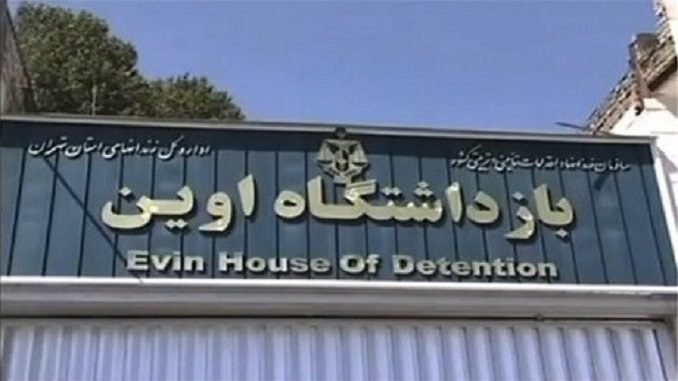
The death of a young Iranian in custody for allegedly taking part in anti-establishment protests has heightened fears of brutal official reprisals against detained protesters and other perceived dissidents following the worst street demonstrations Iran has seen in nearly a decade, RFERL reports. Iranian activists probing the fates of detainees during protests and other unrest that erupted late last month reported on January 7 that 22-year-old Sina Ghanbari had died in prison of “unknown causes. ”
The activists, who include lawyers and volunteers including individuals caught in past crackdowns like the one after a disputed presidential election in 2009, say their self-styled committee was informed of Ghanbari’s death by other detainees following their release. Well after the unconfirmed reports, the head of the prison authority in Tehran Province on January 8 said that Ghanbari had hanged himself in a prison lavatory.
“On the morning of Saturday, January 6, one of the prisoners, Sina Ghanbari, son of Ali Akbar, visited the lavatory of the quarantine section and hanged himself,” Mostafa Mohebi told the semiofficial ISNA news agency.
Mohebi said a prosecutor had come to the prison and interviewed “prison guards and those informed” while also issuing “necessary orders.” Two Iranian lawmakers subsequently confirmed Ghanbari’s death and suggested that the young man had committed suicide while in detention but did not offer details.
“This 22-year-old young man was arrested by the police. I was informed that he had committed suicide in jail,” reformist lawmaker Tayebeh Siavashi was quoted as saying by the semiofficial ILNA news agency.
The activist committee said via an announcement by activist Mehdi Mahmudian, a journalist, and member of the reformist Participation Front who spent time in jail in 2009, that Ghanbari had been held in the quarantine section of Tehran’s Evin prison, where detainees are frequently held before being taken to a general ward.
At least 22 other deaths have been reported in connection with the December-January protests but Ghanbari’s is the first report of a death in custody.
“This news is like a knife stabbing the hearts of those whose young ones are in prison. Even if [the news] is true, what did you do to them that they prefer to die than to tolerate your actions,” said Mohammad Aghazadeh, whose son Soheil Aghazadeh is among some 80 students recently arrested.
Human rights activists in Iran have raised concerns about mass arrests during the country’s largest protests in nearly a decade after at least three demonstrators died in a notorious Tehran jail, The Guardian reports. Two members of the Iranian parliament close to the reformist camp confirmed on Monday that one detainee, Sina Ghanbari, had died in Evin prison.
Separately, Nasrin Sotoudeh, a prominent human rights lawyer, told the Guardian on the phone from Tehran that at least two other protesters had died in the jail. They have not yet been identified.
At least 21 people died after violent clashes between protesters and security guards during more than a week of demonstrations. Most of those killed were protesters and some were security guards, according to officials. More than 1,000 people, including at least 90 students, were arrested.
“I spoke to a prisoner in Evin prison and I was told that three detainees had lost their lives. When authorities resort to mass arrests, they cannot claim to protect their rights. It is not possible in such a situation for the judicial process to take its due course,” Sotoudeh said.
Sotoudeh was particularly worried about the use of unofficial detention centers. During the protests of 2009 that followed Mahmoud Ahmadinejad’s disputed re-election as president, one such detention center, Kahrizak, drew nationwide attention after it emerged that a number of protesters had been sexually assaulted, tortured and killed in custody. Reformist politicians, including the outspoken MP Mahmoud Sadeghi, have warned of a repeat of the scandal.
“I warn the president, intelligence, and judicial officials against the repeat of a second Kahrizak,” he tweeted.
Sotoudeh has cast doubt over claims by officials that Ghanbari killed himself. She said his death showed a violent crackdown was indeed under way though it was too soon to know its scale.
“In 2009, it took weeks before the scale of brutality at Kahrizak was laid bare. The authorities are responsible for the health of prisoners,” Sotoudeh said.
“There is no excuse for the death of a 23-year-old held in Evin,” Mahnaz Afshar, a high-profile Iranian actor, tweeted.
Nassim Papayianni, an Amnesty International researcher on Iran, said its investigations showed “time and time again just how inhumane prison conditions are in Iran, with overcrowding, poor ventilation and the ever-present threat of torture.
“We’re also concerned that the Iranian authorities are denying the family members of that arrested information about the fate and whereabouts of their loved ones. The authorities must end this wall of silence and provide family members information on those detained.”
Amnesty International demanded on January 4 that Iranian authorities “protect hundreds of detainees from torture and other ill-treatment.”
“Given the alarming scale of the current wave of arrests, it is highly likely that many of those held are peaceful protesters who have been detained arbitrarily and now find themselves in prisons where conditions are dire and torture is a common tool to extract confessions and punish dissidents,” Amnesty International’s research and advocacy director for the Middle East and North Africa, Philip Luther, said.
